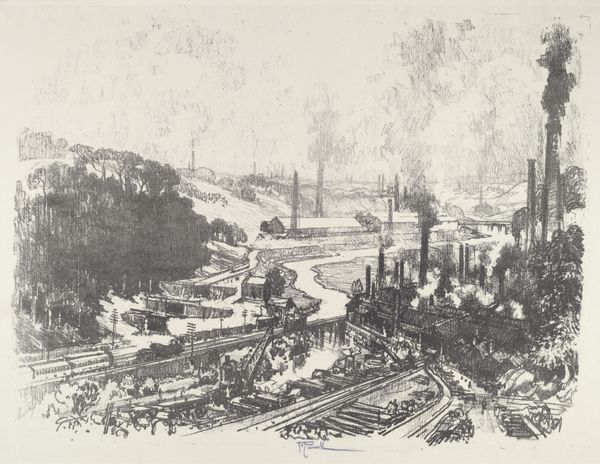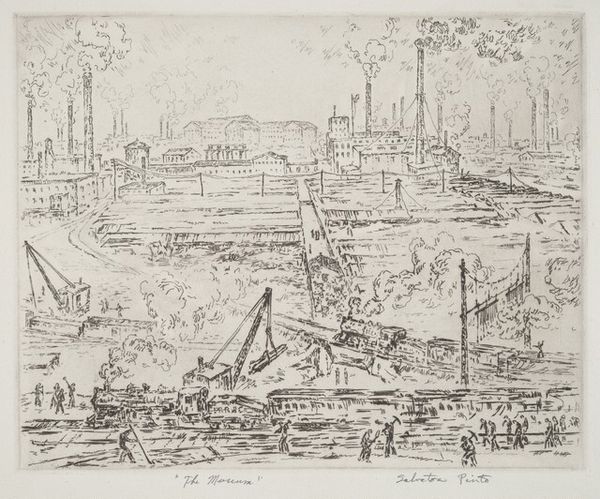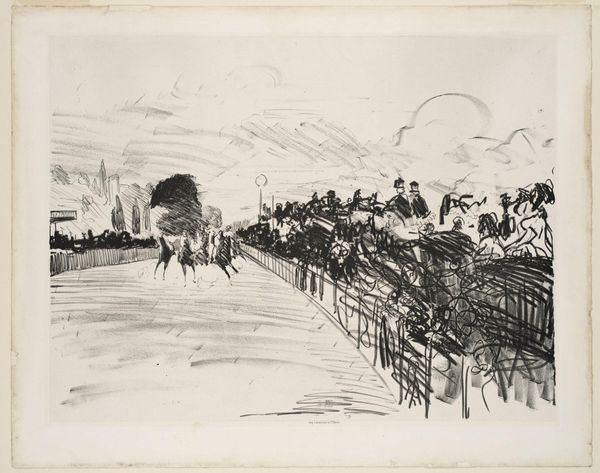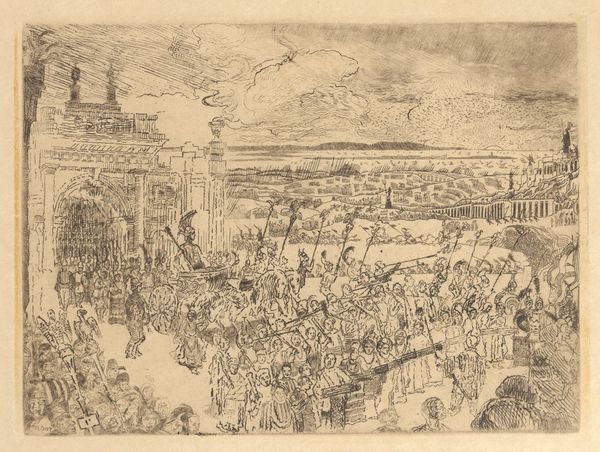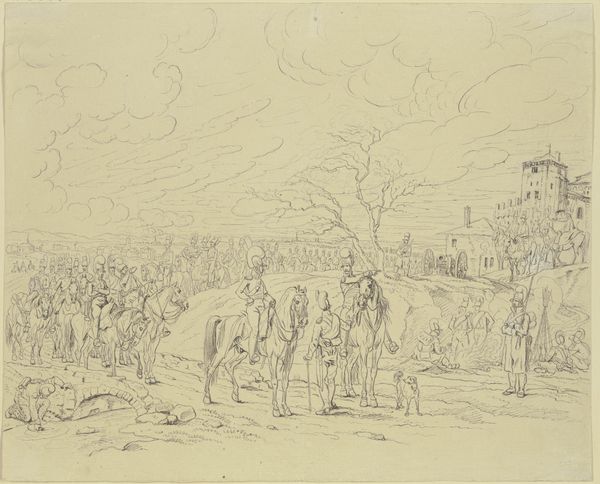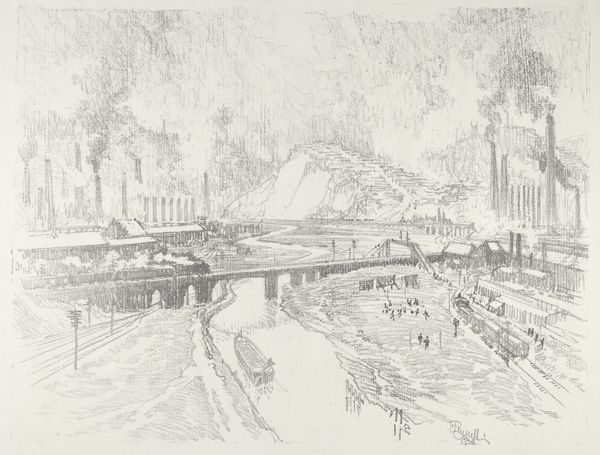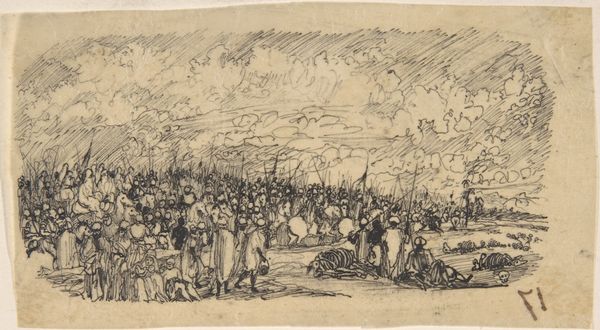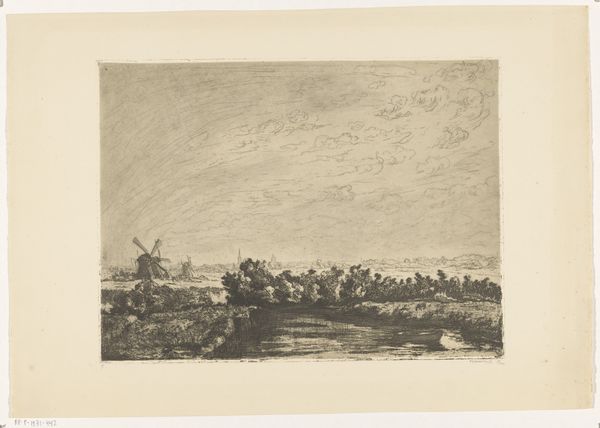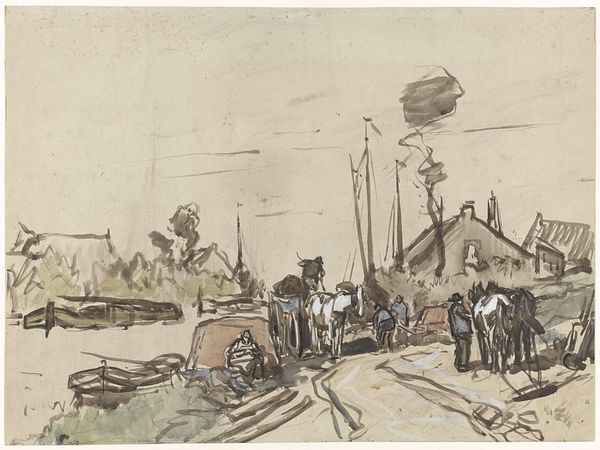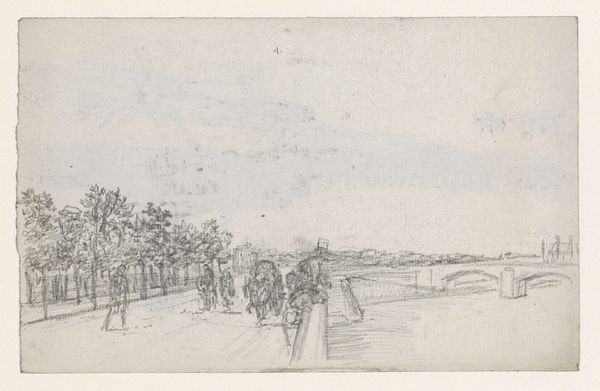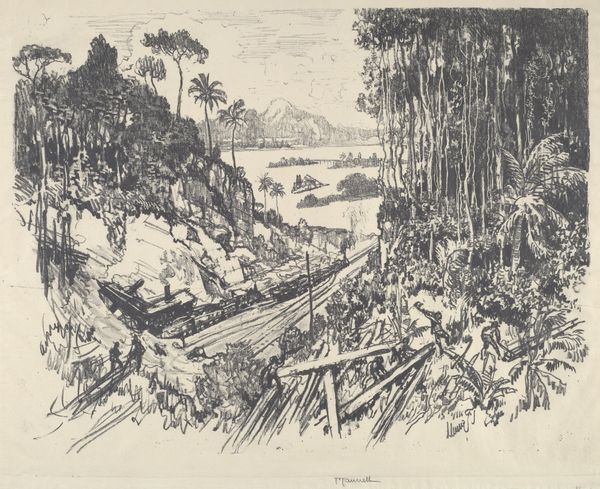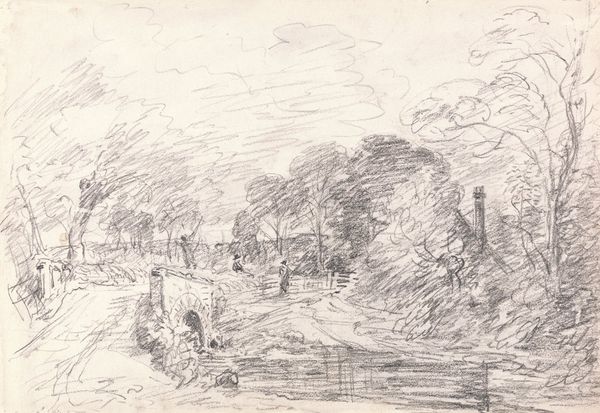
#
amateur sketch
#
light pencil work
#
ink drawing
# print
#
pen sketch
#
pencil sketch
#
incomplete sketchy
#
ink drawing experimentation
#
pen-ink sketch
#
fantasy sketch
#
initial sketch
Copyright: National Gallery of Art: CC0 1.0
Editor: This is "Building the Camp" by Joseph Pennell, created in 1917. It’s a print, and my first impression is how dynamic it feels, like I'm witnessing a crucial moment in history. What do you see in this piece that might go beyond its immediate representation of construction? Curator: The dynamism you observe speaks directly to the moment. It was created during WWI. Pennell wasn’t simply depicting the construction of a military camp. He was visualizing the feverish mobilization of resources and labor necessary for modern warfare. Look at the lines, the smoke. How do they make you feel? Editor: Anxious, definitely. Like there’s a frantic energy. It also feels very masculine, almost overwhelmingly so, if that makes sense. Curator: It does. This piece romanticizes the industrial effort. The labor seems heroic. But who is left out of this narrative? Where are the women? How does this representation reinforce dominant power structures of the time? It invites a critique of whose stories get told, and how. Editor: So, it's not just about what's shown, but also what's intentionally omitted? By glorifying the industrial war effort without showing the human cost, including women, is he promoting a very specific, potentially problematic narrative? Curator: Precisely. It’s a visual argument for a specific kind of progress, one tied to militarization and excluding alternative narratives. It's important to critically examine whose perspectives are centered and marginalized during times of conflict. Editor: I hadn’t thought of it that way. Seeing it as propaganda, even subtle propaganda, gives me a completely new perspective. Curator: Exactly. And considering it propaganda helps us understand its power and the context in which it was made and consumed.
Comments
No comments
Be the first to comment and join the conversation on the ultimate creative platform.

